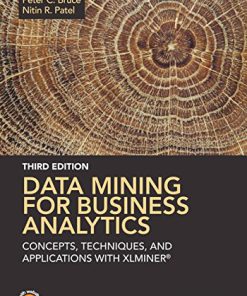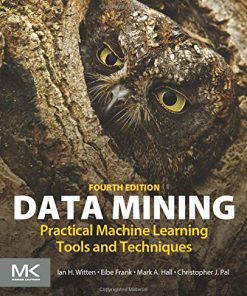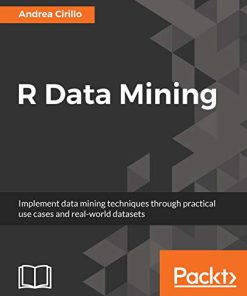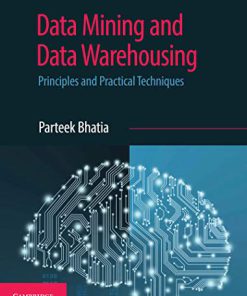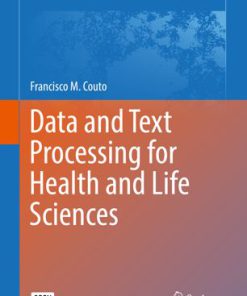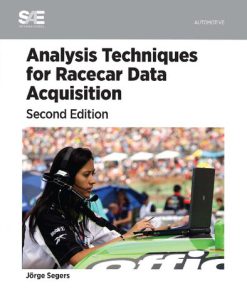Data Mining Techniques for the Life Sciences 2nd Edition by Oliviero Carugo,Frank Eisenhaber 1493935704 9781493935703
$50.00 Original price was: $50.00.$25.00Current price is: $25.00.
Data Mining Techniques for the Life Sciences 2nd Edition by Oliviero Carugo,Frank Eisenhaber – Ebook PDF Instant Download/Delivery:9781493935703,1493935704
Full download Data Mining Techniques for the Life Sciences 2nd Edition after payment

Product details:
ISBN 10:1493935704
ISBN 13:9781493935703
Author:Oliviero Carugo,Frank Eisenhaber
This volume details several important databases and data mining tools. Data Mining Techniques for the Life Sciences, Second Edition guides readers through archives of macromolecular three-dimensional structures, databases of protein-protein interactions, thermodynamics information on protein and mutant stability, “Kbdock” protein domain structure database, PDB_REDO databank, erroneous sequences, substitution matrices, tools to align RNA sequences, interesting procedures for kinase family/subfamily classifications, new tools to predict protein crystallizability, metabolomics data, drug-target interaction predictions, and a recipe for protein-sequence-based function prediction and its implementation in the latest version of the ANNOTATOR software suite. Written in the highly successful Methods in Molecular Biology series format, chapters include introductions to their respective topics, lists of the necessary materials and reagents, step-by-step, readily reproducible laboratory protocols, and tips on troubleshooting and avoiding known pitfalls.
Authoritative and cutting-edge, Data Mining Techniques for the Life Sciences, Second Edition aims to ensure successful results in the further study of this vital field.
Data Mining Techniques for the Life Sciences 2nd Table of contents:
Update on Genomic Databases and Resources at the National Center for Biotechnology Information
Protein Structure Databases
The MIntAct Project and Molecular Interaction Databases
Applications of Protein Thermodynamic Database for Understanding Protein Mutant Stability and Designing Stable Mutants
Classification and Exploration of 3D Protein Domain Interactions Using Kbdock
Data Mining of Macromolecular Structures
Criteria to Extract High-Quality Protein Data Bank Subsets for Structure Users
Homology-Based Annotation of Large Protein Datasets
Computational Techniques
Identification and Correction of Erroneous Protein Sequences in Public Databases
Improving the Accuracy of Fitted Atomic Models in Cryo-EM Density Maps of Protein Assemblies Using Evolutionary Information from Aligned Homologous Proteins
Systematic Exploration of an Efficient Amino Acid Substitution Matrix: MIQS
Promises and Pitfalls of High-Throughput Biological Assays
Optimizing RNA-Seq Mapping with STAR
Prediction Methods
Predicting Conformational Disorder
Classification of Protein Kinases Influenced by Conservation of Substrate Binding Residues
Spectral–Statistical Approach for Revealing Latent Regular Structures in DNA Sequence
People also search for Data Mining Techniques for the Life Sciences 2nd :
predictive and descriptive data mining techniques
which of the following data mining techniques is predictive
advanced data mining techniques
data mining techniques examples
data cleaning in data mining techniques
Tags:
Oliviero Carugo,Frank Eisenhaber,Mining,Techniques,Life
You may also like…
Computers - Computer Science
Data Mining Practical Machine Learning Tools and Techniques Fourth Edition Ian H. Witten
Computers - Organization and Data Processing
Engineering - Automotive
Analysis Techniques for Racecar Data Acquisition 2nd Edition Jorge Segers
Biology and other natural sciences - Biophysics
Introduction to Biological Physics for the Health and Life Sciences 2nd Edition Kirsten Franklin
Mathematics - Mathematical Statistics
Computers - Computer Science




